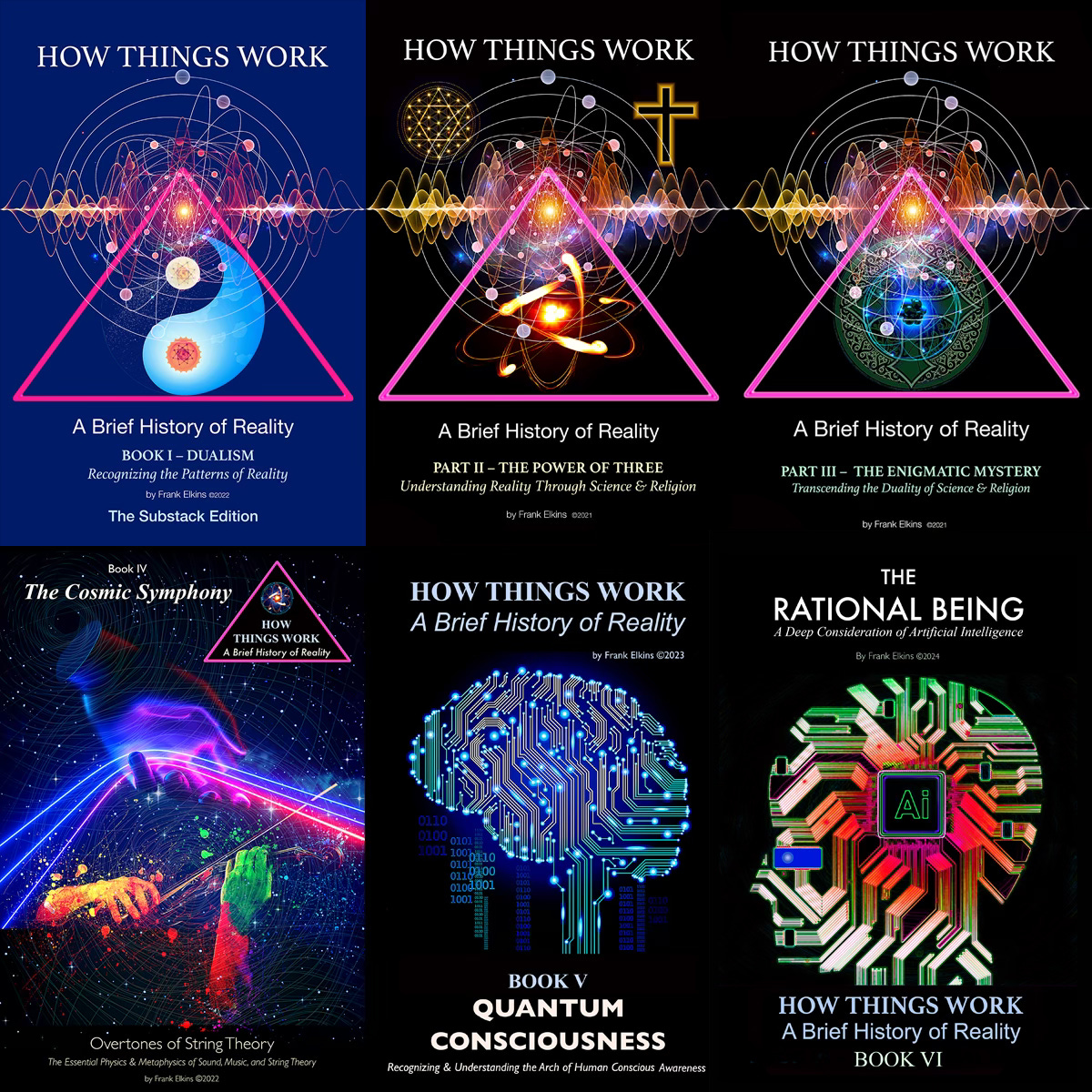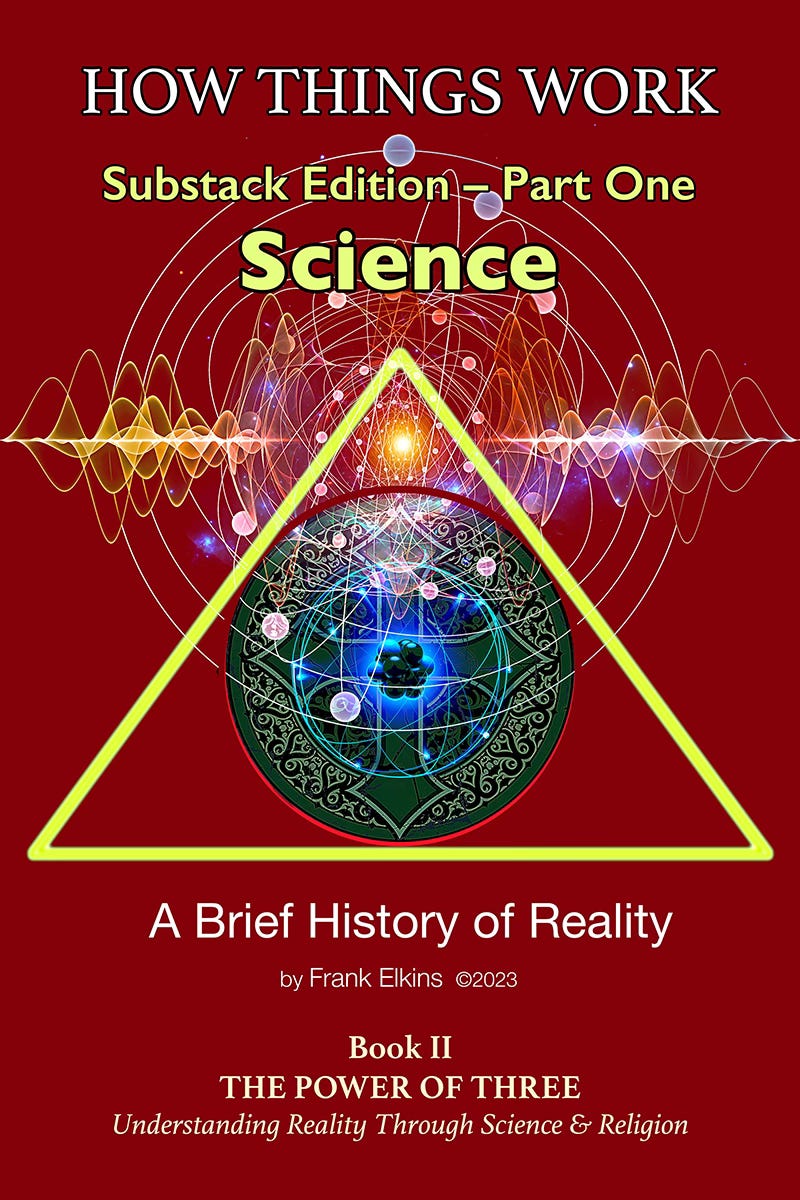The Scientific Explanation: Part Two – The Radiation Era
BOOK III: The Enigmatic Mystery (Science & Religion) – Consideration #173
Be a part of the Conversation!
Tuesday January 28, 2025
“If the rate of expansion one second after the Big Bang had been smaller by even one part in a hundred thousand million million, it would have recollapsed before it reached its present size. On the other hand, if it had been greater by a part in a million, the universe would have expanded too rapidly for stars and planets to form.”
– Stephen Hawking
PREFACE
Welcome Everybody!
This week we continue our consideration of the Big Bang with a consideration of the Radiation Era. The Radiation Era is named for the dominance of energy in the form of pure radiation, or light, immediately after the Big Bang occurred. This era represents approximately the first two-minutes of the newly emerging universe.
The Radiation Era can be broken down into smaller eras, or stages, called epochs, each lasting only microseconds, which were generated within the universe’s first few minutes of creation; influencing its manifestation for the next 380,000 years. The first epoch is called the Planck Epoch.
CONSIDERATION #173 – The Scientific Explanation: Part Two
The Radiation Era
At the beginning of the Planck Epoch, no physical matter of any kind exists in the universe. The first stage of the universe consists of only pure energy in a universe reaching temperatures of 1040 Kelvin. However, this energy held the potential for manifesting the four forces of nature through the “Superforce.” At this “time” in the universe’s’ evolution, the Superforce consisted of a combination of gravity, the strong nuclear force, the weak force, and the electromagnetic force. The Planck Epoch ends when the force of gravity separates from the Superforce becoming a unique force of its own. This is the beginning of the next epoch, the Grand Unified Theory Epoch.
“…the Grand Unified Theory Epoch begins with the separation of gravity from the Superforce…”
Approximately 1043 second into the creation of the universe, the Grand Unified Theory Epoch begins with the separation of gravity from the Superforce leaving the other three forces still “unified” as a single force. The universe has cooled to a temperature of 1036 Kelvin. However, at the end of this epoch the strong nuclear force separates itself from the remaining three forces to become an independent force of its own, like gravity. This leads to the Inflationary Epoch, which is the essence of the Big Bang.
At approximately 1036 second into the creation of the universe it undergoes a rapid expansion, or controlled explosion, that instantly increases the size of the universe from the size of an atom to the size of a grapefruit. After which it continues to expand. During this Inflationary Epoch, the universe is still extremely hot (1033 Kelvin), but cool enough to begin forming electrons, quarks, and other subatomic particles. The formation of these early particles leads to the beginning of the Electroweak Epoch.
“The once unified ‘Superforce’ had over a very short period broken down into four unique individual forces.”
The Electroweak Epoch begins when the final two remaining unified forces, the weak nuclear and the electromagnetic, separate into their own unique forces. The once unified “Superforce” had over a very short period broken down into four unique individual forces. This occurred 1032 second into the birth of the universe. The temperature of the universe had fallen to 1020 Kelvin. At this point in the universe’s existence, the early constituents of matter exist.
By the next epoch, the Quark Epoch, all of the ingredients for the universe are present. Although the universe has cooled to 1016 Kelvin, it is still too hot and dense for sub-atomic particles to form into atoms. However, in the Hadron Epoch, only 106 second into creation, the universe has cooled to a more comfortable 1010 Kelvin; cool enough for quarks to bind together and form protons and neutrons. The basic atomic structure was beginning to become manifested in the universe.
“100 seconds into the birth of the universe the protons and neutrons fused together creating a nuclei and the first elements in the universe…”
In the Lepton Epoch, approximately one second into the universe’s creation at a temperature of 1012 Kelvin, and the Nuclear Epoch, approximately 100 seconds into the birth of the universe at a temperature of 109 Kelvin, the protons and neutrons fused together creating a nuclei and the first elements in the universe: Hydrogen and Helium.
In less than two minutes, the universe had evolved from an infinitely dense state of pure energy into an infinitely expanding state capable of producing infinite building blocks of physicality. However, because of the intense heat and radiation, these atoms were not stable enough to form matter. The universe would have to cool for another 380,000 years.
POSTSCRIPT
The Radiation Era reflects a period in which only pure energy, or light, exists in the universe. The universe is still too hot for the laws of physics to completely stabilize into the elements necessary for physical manifestation, or the bonding of atoms. However, the universe had essentially materialized into empirical reality. All it needed was a few hundred thousand years to cool down a little.
In her article, “How did the first element form after the Big Bang,” Alison Klesman effectively explains how those building blocks formed in the first twenty minutes of the Big Bang and how the universe became a “physical” manifestation of the singularity through the formation of the basic atomic and subatomic particles constituting the empirical universe.
“Immediately (much less than a second) after the Big Bang, the universe was both too hot and too dense for elements to form. Hydrogen didn’t appear until the universe had spread out — and subsequently cooled — enough for the first protons and neutrons, and later simple atoms, to form.
Between about 1012 and 106 second after the Big Bang, neutrinos, quarks, and electrons formed. Protons and neutrons began forming shortly after, from about 106 to 1 second after the Big Bang. Within about 3 minutes after the Big Bang, conditions cooled enough for these protons and neutrons to form hydrogen nuclei. This is called the era of nucleosynthesis. Some of these nuclei combined to form helium as well, though in much smaller quantities (just a few percent). But after about 20 minutes, nucleosynthesis ended and no further nuclei could form.
The problem at this point was that electrons couldn’t stay in orbit around any atomic nucleus because of the immense heat and radiation still flooding the universe. Shortly after any neutral atoms would form (neutral atoms simply contain the same number of protons and electrons, and thus carry no overall charge), they were knocked apart again by energetic radiation.
Finally, after 380,000 years or so, the universe had again expanded and cooled enough for conditions to favor electrons staying in orbit around atomic nuclei. This is when recombination occurred — neutral hydrogen (and helium) finally appeared because they could “recombine with” (hold on to) electrons without easily losing them to stray radiation.”
– Alison Klesman, How did the first element form after the Big Bang?
Approximately 380,000 years after the original Big Bang, the overwhelming amount of radiation had subsided, and the universe had finally cooled down to a point where atoms could stabilize; the beginning of physical reality.
Next week we will consider the Matter Era and epochs spanning billions of years as opposed to only microseconds…
Get More Reality! With the “Reality by a Thread” Paid Upgrade…
Click Image to Learn More…
Unique Content Makes Untangling the Knots of Reality “One of the Best Podcasts about History!”
“…this unique Substack podcast by FRANK ELKINS is not strictly speaking history. It is a strange mix of history, philosophy, theology, spirituality, physics, and astronomy… today scientists like to divide our world into subjects, and these subjects into niches. Yet, the world we live in is just one, and we strive to comprehend it as it is. Try this podcast for a start.”
– Barbora Jirincova, The Best Podcasts About History
Excerpt from this week’s podcast: “Untangling the New Testament Message”
Excerpt From This Week’s “Reality by a Thread” (Western Empiricism)
“Aristotle divides, or classifies, reality into either physics or metaphysics. Physics focuses on the natural patterns of the empirical world, or the world of the senses. Metaphysics focuses on the rational patterns of the mind, or the subjective world of the spirit. Metaphysics, including mathematics and geometry, become the foundation for rational abstract thought. Aristotle’s first rational consideration revolved around the ‘first cause’ of the universe, or reality. He ‘named’ this first cause the ‘Unmoved Mover.’”
– Frank Elkins (Reality by a Thread: January 30 , 2025)
All for less than a couple of cafe lattes every month at a local coffee shop! And You Will Have Something Interesting to Talk About With Your Friends at the Coffee Shop!!
Only $7.00 a month or $70.00 a year! UPGRADE NOW!
Subscribed
Books I-VI Are Available NOW! Click Image for more information…
The Substack Edition of SCIENCE is also now available! Click Image for more information…





